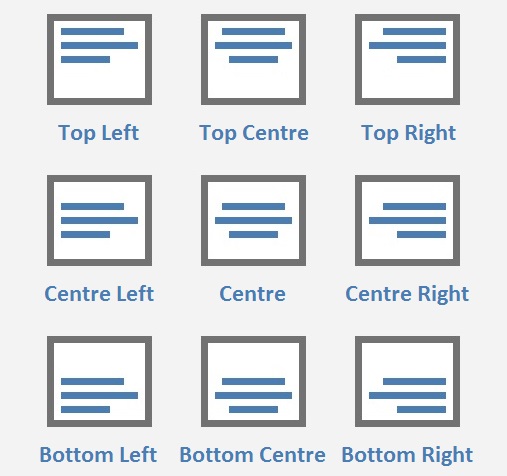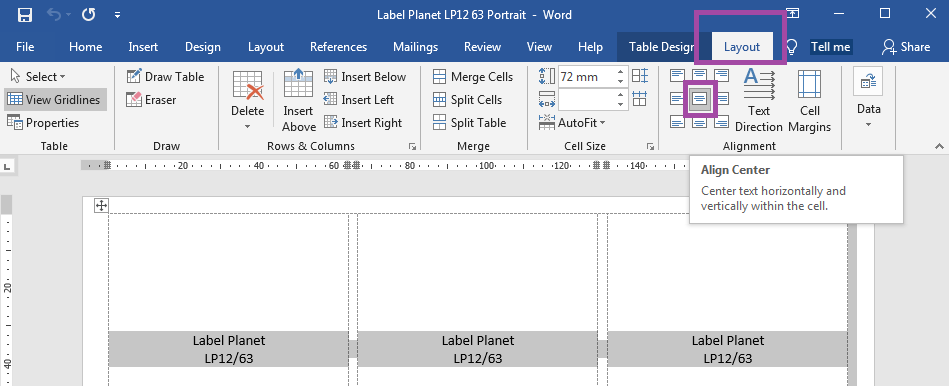Why central alignment is ideal for label designs and how to centralise label templates.
What Do We Mean By A “Central Alignment”?
The term “alignment” actually has a number of applications when it comes to labels and label templates. Alignment refers to the spatial arrangement of items – along a straight line, in parallel lines, in a shared space or in corresponding spaces, or in relation to another item.
When working with labels, alignment can refer to:
- The way labels are positioned on a sheet
- How a label design is positioned on each label (and how the elements within that design are positioned)
- How well (or not) a label template positions your label designs when you print your labels
When it comes to designing label templates, the most important “alignment” is how well your template (and therefore your label design) aligns with your labels when printed. However, it’s also important to think about the alignment of your design (and the elements within that design) – because this can influence how easy (or not) it is to produce a beautifully aligned set of printed labels.
There are NINE ways to align a label design on a label, which are as follows (and are usually represented by the following icons):

When aligning a label design, the design is aligned relative to the LABEL. This is important because items can be aligned relative to a number of other items (for example, in Word, you can align items relative to the page, to the page margins, to text, or to other items).
Why Do We Recommend Using A Central Alignment For Label Templates?
Choosing an alignment is often a subjective choice; some people prefer the appearance of a central alignment, while others prefer a different alignment. For example, a left alignment is particularly popular for simple text-based labels, such as address labels or product information labels, which only contain basic text that is read from left to right – making a left alignment feel more natural.
The reason we recommend a central alignment is because it tends to make it easier to align your designs onto your labels during the printing process. This is because your design “starts” from the centre of each label and expands outwards – this means you are less likely to get problems with content getting cut off around the edges of your labels. A central alignment can also have a natural sense of balance to it, which many find creates a more attractive appearance for label designs (especially on labels with more obvious shaping – like round labels and oval labels).
How Do You Set Word Label Templates To Use A Central Alignment?
In Word, you can set individual alignments for each individual item (as well as the label templates themselves), so the simplest option is to apply a central alignment to the whole label template. Word label templates are made using tables, so you need to apply a central alignment to your table.
First select your table; move your cursor to the top left corner of the table until the cursor turns into a four headed arrow. Left click to select your table. Two tabs will appear in the ribbon at the top of the page; “Table Design” and “Layout”. Click on the Layout tab and find the nine alignment icons in the “Alignment” section. Click on the middle “Centre” icon to apply a central alignment to the entire table – and your label template.

Any items you now add will be centrally aligned by default. If your design is made up of multiple elements, remember to change the “Wrap Text” format to give yourself better control over the positioning of these items. Left click to select an item and click on the “Format” tab that appears in the ribbon; click on the Wrap Text icon and select “Tight”.
You can use the Format tabs to apply different alignments to individual items but we advise sticking with the overall central alignment and moving each element into its required position from there.
All of the Word label templates supplied by Label Planet are set up with a central alignment. If you want to use a different alignment, you can use the steps listed above to apply your preferred alignment to your template.
 Label Planet
Label Planet